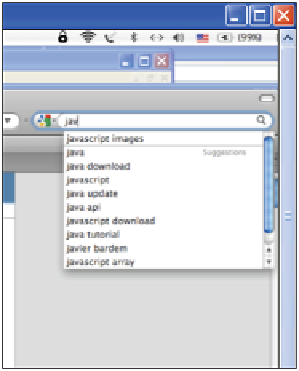HTML and CSS Reference
In-Depth Information
Figure 18.2
Google Suggests.
© 2010 Google.
Ajax is based on already existing standards. If you have a strong foundation in the fol-
lowing topics, there is very little new to learn:
•
JavaScript
•
XML
•
HTML
•
CSS
•
DOM
We have not covered XML in this topic, but it has been a standard format since 1998
for sharing structured text-based information between computers. XML is not a require-
ment for writing Ajax applications, but we will examine an XML document and how
Ajax processes its data.
Communication
We will now go through the steps to create and send requests to the server. We examine
each of these steps and then put all of them together in several examples.
1. First and foremost we must create an
XMLHttpRequest
object, a JavaScript
object with properties and methods used to handle communication between the
browser and server.
2. After we create the request object, we use the object's
open()
method to initial-
ize the object; that is, tell it how the data will be sent, GET or POST (see
Chapter 11, “Working with Forms and Input Devices”), and the URL of the file
data that is being requested. The URL could be a text file, XML data, or a server-
side program such as PHP, ASP.NET, CGI, Java Servlet, and so on.


